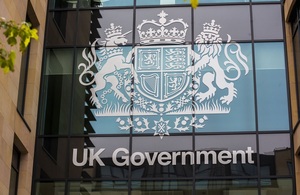
Parliamentary Secretary Pam Damoff highlights investments for Indigenous women entrepreneurs in Budget 2021
Budget 2021 is the Government of Canada’s plan to finish the fight against COVID-19 and ensure a robust economic recovery that is inclusive of all Canadians.
Today, Pam Damoff, Parliamentary Secretary to the Minister of Indigenous Services, met with a small roundtable of Indigenous women entrepreneurs and partner organizations to discuss the broad challenges women face in establishing and maintaining businesses and investments from Budget 2021: A Recovery Plan for Jobs, Growth, and Resilience.
The COVID-19 recession is the steepest and fastest economic contraction since the Great Depression. It has disproportionately affected low-wage workers, young people, women, and racialized Canadians. For businesses, it has been a two-speed recession, with some finding ways to prosper and grow, but with many businesses—especially small businesses—fighting to survive. Budget 2021 is an historic investment to address the specific wounds of the COVID-19 recession, put people first, create jobs, grow the middle class, set businesses on a track for long-term growth, and ensure that Canada’s future will be healthier, more equitable, greener, and more prosperous.
Indigenous communities are often in rural and remote areas and the success of Indigenous-led businesses, including tourism businesses, is critically important to local jobs and economies.
Currently, only 36 per cent of Indigenous-led businesses are owned by women. To address this and make sure women entrepreneurs are empowered in the economic recovery, Budget 2021 proposes to invest $22 million over three years, starting in 2021–22, to support NACCA’s Indigenous Women’s Entrepreneurship Initiative by providing tools, services, and resources to increase the number of Indigenous women entrepreneurs. This funding would support NACCA in achieving its target of increasing the number of Indigenous women entrepreneurs who access financing through Aboriginal Financial Institutions by 50 per cent.
The Government of Canada’s top priority remains protecting Canadians’ health and safety, particularly during this third, aggressive wave of the virus and its variants. Vaccine rollout is underway across Canada, with federal government support in every province and territory. Budget 2021 invests in Canada’s bio-manufacturing and life sciences sector to rebuild domestic vaccine manufacturing capacity, and has a plan to put in place national standards for long-term care and mental health services.
Budget 2021 is a plan to bridge Canadians and Canadian businesses through the crisis and toward a robust recovery. It is a plan to drive economic growth, a plan to secure women’s place in the workforce, and a plan to offer each and every child in Canada the best start in life. This plan aims to reduce fees for parents by 50 per cent on average by 2022, with a goal of reaching $10 per day on average by 2025–26 for all regulated child care spaces in Canada. It proposes to extend business and income support measures through to the fall and to make investments to create jobs and help businesses across the economy come roaring back. It will support almost 500,000 new training and work opportunities, including 215,000 opportunities for youth; support businesses in our most affected sectors, such as tourism and arts and culture; and accelerate investment and digital transformation at small and medium-sized businesses. Budget 2021 is a plan that puts Canada on track to meet its commitment to create 1 million jobs by the end of the year.
Canada entered the pandemic in a strong fiscal position. This allowed the government to take quick and decisive action to support people and businesses, and put it in the position to make historic investments in the recovery.
